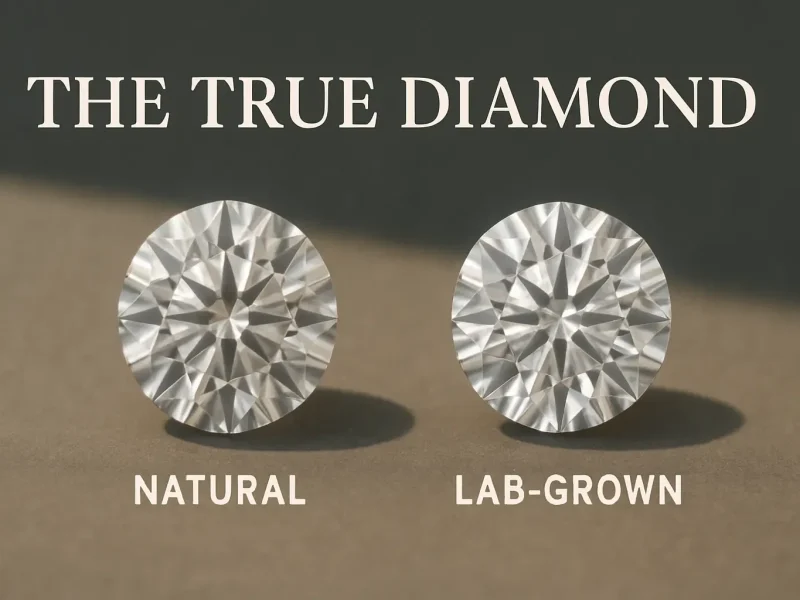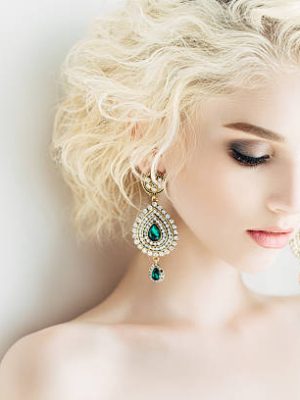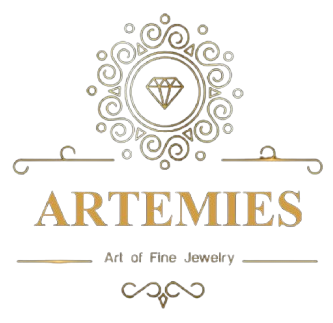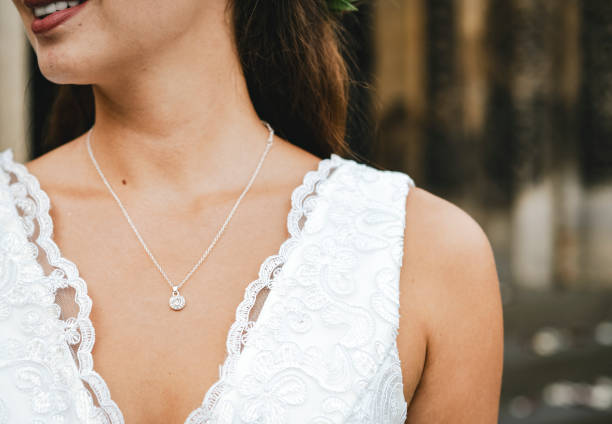
- Wedding
The True Diamond: Navigating the Choice Between Natural and Lab-Grown Stones
Table of Contents
Emily sat by the window of her childhood home, gazing at the rolling hills that stretched out beyond the garden. The sun was setting, casting a golden glow over the landscape, and she felt a deep sense of peace. In her hand, she held her grandmother’s wedding ring—a beautiful piece adorned with a natural diamond that had been passed down through generations. It was a symbol of her family’s legacy, a testament to the enduring love that had been shared over the years.
Growing up, Emily had always been fascinated by the stories behind the family’s jewelry. Each piece had a history, a tale of love, sacrifice, or triumph. The natural diamonds, in particular, were revered for their rarity and the billions of years it took for them to form deep within the Earth. They were more than just stones; they were pieces of history, unique and irreplaceable.
Her grandmother often told her, “Emily, diamonds are precious because they are born from the Earth. They’ve survived the test of time, just like our family. They’re not something that can be made in a lab. They’re a gift from nature.”
These words resonated with Emily, and she grew up believing that the true value of a diamond lay in its natural origin. For her, a diamond was not just a symbol of wealth or status—it was a connection to the Earth and a representation of something pure and eternal.
Alex was nervous. He had been planning to propose to Emily for months, but the pressure to find the perfect ring was weighing heavily on him. He knew how much her family’s traditions meant to her, especially when it came to diamonds. But as he browsed through jewelry stores, he couldn’t help but notice the stark difference in prices between natural and lab-grown diamonds.
Lab-grown diamonds were being marketed as a modern alternative—affordable, ethical, and visually identical to natural diamonds. The jewelers he visited touted the benefits, emphasizing how lab-grown diamonds were “better for the planet” and came without the concerns associated with diamond mining.
Alex was tempted. He wanted to give Emily a ring that would dazzle her, but he also wanted to be financially responsible. The idea of spending less for a diamond that looked the same on the surface was appealing. Yet, something didn’t sit right with him. He couldn’t shake the feeling that a lab-grown diamond wouldn’t truly reflect what he wanted to express with his proposal.
One afternoon, Alex walked into a high-end jewelry store in the city. The place was sleek and modern, with rows of rings displayed under bright lights. A well-dressed jeweler approached him, her smile polished and professional.
“Looking for something special?” she asked.
“Yes, I’m planning to propose,” Alex replied, trying to keep his voice steady.
“Congratulations! You’re in the right place. We have a wide selection of both natural and lab-grown diamonds. Have you considered lab-grown? They’re just as beautiful as natural diamonds, and they’re more affordable. Plus, they’re ethically sourced.”
Alex looked at the sparkling stones in the case. They were indeed beautiful, but he felt a pang of doubt. “I’ve heard about lab-grown diamonds, but I’m not sure if they’re the same as natural ones.”
The jeweler smiled, clearly prepared for this question. “Lab-grown diamonds are identical to natural diamonds in every way that matters. They’re made of the same material, they’re cut and polished the same way, and they have the same brilliance. The only difference is that they’re grown in a lab, which makes them more sustainable and ethical.”
She picked up a ring with a large, flawless diamond. “This one is lab-grown. Imagine the look on your fiancée’s face when she sees this sparkling on her finger. And the best part? It costs significantly less than a natural diamond of the same size and quality.”
Alex felt the pressure mounting. He knew Emily loved diamonds and wanted to give her something stunning, but he also knew how much she valued authenticity. The jeweler’s words were convincing, but he couldn’t shake the feeling that a lab-grown diamond wouldn’t carry the same meaning as a natural one.
A few days later, Emily stumbled upon Alex’s search history while using his laptop. She was surprised to see that he had been looking at lab-grown diamonds. Her heart sank. Could he really be considering giving her a lab-grown diamond? The thought troubled her deeply.
Emily spent the next few hours researching lab-grown diamonds. The more she read, the more unsettled she became. She learned that while lab-grown diamonds were chemically similar to natural diamonds, they lacked the natural formation process that made diamonds so special to her. Natural diamonds were born under immense pressure over billions of years, deep within the Earth. They were unique, with each one carrying its own story of survival and transformation.
Lab-grown diamonds, on the other hand, were mass-produced in a matter of weeks, with no connection to the Earth or the history that made natural diamonds so valuable. To Emily, they felt artificial, devoid of the intrinsic value and significance that natural diamonds held.
She thought about her grandmother’s words and the legacy of the natural diamonds in her family. Lab-grown diamonds, despite their similarities in appearance, could never replace the true meaning and value of a natural diamond.
That evening, Emily confronted Alex about what she had discovered. “Alex, I saw that you’ve been looking at lab-grown diamonds. Were you thinking about getting one for my engagement ring?”
Alex looked at her, unsure of how to respond. “I… I was considering it. They’re more affordable, and they’re supposed to be just as good as natural diamonds. But I haven’t made any decisions yet.”
Emily took his hand, her voice gentle but firm. “I know lab-grown diamonds are being marketed as the same as natural diamonds, but they’re not. They don’t have the history, the rarity, or the connection to the Earth that natural diamonds do. To me, a diamond isn’t just a piece of jewelry. It’s a symbol of something pure and enduring—something that has withstood the test of time.”
She paused, looking into his eyes. “I want our engagement ring to represent the same values. I want it to be something that we can pass down to our children, something that carries the weight of tradition and history. A lab-grown diamond might look the same, but it doesn’t have the same soul.”
After thoroughly exploring their options on the Artemies Gems and Jewelry website and reading about the different aspects of diamonds, Emily and Alex decided to purchase a natural diamond engagement ring. They chose a ring with a smaller carat weight but with perfect cut, clarity, and color, all at a reasonable price.
what do you think? which one do you prefer? lab-grown diamond or natural diamond?
Related Posts
Fall in Love with Jewelry, Stories, and Secrets
Join Artemies Magazine for insider jewelry tips, trend updates, and subscriber-only discounts.



